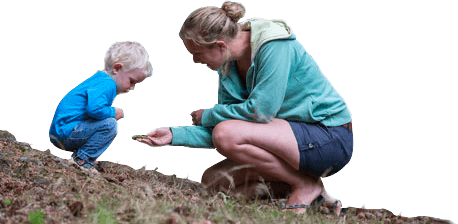Animal accidents
PUBLISHED ON: 11 JANUARY 2018The open landscape of the New Forest where ponies, cattle, donkeys, sheep and pigs roam free is one of the distinctive features of the New Forest National Park. This is one of the few areas in England, especially in the busy and developed south, where drivers often come face-to-face with animals on the road, both in daylight and at night.
The animals are owned by people called commoners, and it’s the animals’ free grazing activity across the forest that helps shape the landscape we know and love today.
With other organisations, we regularly check accident data for trends that will help us focus efforts. You can see how the total number of animals killed and injured each year has changed since 1990 by downloading the latest animal accident analysis from the list below. You can also see data on different kinds of animals, and the effect of time of year and time of day. The various maps of animal accidents show very clearly that some routes (usually those with most traffic) have many more incidents than elsewhere.
Every animal killed is a great loss to the Forest, and to its owner. However, the overall trend since 1991 is clearly downwards and most years since 2007 have had fewer than 100 animals killed and injured. In 2020 when traffic was reduced by Covid-19 restrictions, 50 animals were killed and a further 21 were injured. In 2021, 44 animals were killed and a further 15 were injured. 2022 saw 41 animals killed and a further 19 injured.
However, animal accidents rose to 95 in 2023, compared to 82 the year before. While the number of New Forest ponies that died due to accidents dropped, 27 compared to 34 in 2022, the number of cattle, pigs and sheep that died increased. The total number of animals killed and injured rose from 60 in 2022 to 63 in 2023.
Accidents fell to 94 in 2024, as did the total number of ponies killed, 22 compared to 27 the previous year. The total number of animals killed or injured on Forest roads also dropped to 52 – the lowest annual total recorded to date.
The number of animals grazing on the Forest has risen significantly in recent years, which increases the likelihood of accidents. However, the percentage killed fell to all-time lows of 0.32% (one out of every 312 animals) in 2020 and 0.37% (one out of every 273 animals) in 2021. Cattle and pigs spend only part of the year on the Forest, so the figures for ponies alone are probably more pertinent, but even these show a clear downward trend in the percentage killed, falling to new lows of 0.49% in 2020 and 0.41% in 2021.
The challenge is, of course, to reduce the number of accidents every year, so the commoners, other local people and a wide range of organisations are always looking for new ideas. In recent years the Highway Authority has improved road warning signage on all of the high risk routes including warnings painted on the road surface. The Shared Forest project, managed by the Commoners Defence Association, worked with local employers to increase their employees’ awareness of the animals on the unfenced roads and encouraging them to drive more carefully. Each winter, when most accidents happen, there is a special publicity campaign to raise awareness of the risks among local drivers who regularly travel across the Forest – everyone can play their part in this, especially through word of mouth and social media.
Forest organisations are encouraging people to carry a hotline card with essential phone numbers to call if an animal is killed or injured which can be downloaded from this page. People can also help raise awareness by displaying a new animal safety car window sticker made from eco-friendly materials. Animal accidents cards and car window stickers are available at many petrol stations and community outlets throughout the New Forest as well as from the New Forest National Park Authority office at Lymington Town Hall, Avenue Road, Lymington SO41 9ZG. The NPA has invested £8,000 towards these in the three-year campaign with the Love the Forest scheme from the New Forest Trust charity contributing a further £2,000.
It is a legal requirement to report an animal accident to the Police as soon as possible and within 24 hours to avoid causing additional suffering to an injured animal. There is a Hit and Run Reward Scheme of up to £5,000 for information leading to a conviction of a driver who has failed to report an animal accident they were involved in.
Click here to view the interactive animal accidents map in another window

